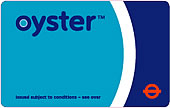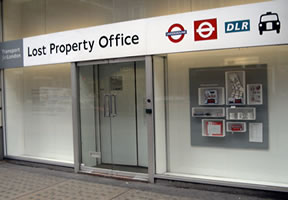Study, work or travel in the UK. British
culture and life.


Guide to using public transport in London
|
|
Study, work or travel in the UK. British
culture and life.
|
|
||
|
|
|
|
||
 |
||||
|
|
|
|
||
|
|
||||
 |
||||
|
Guide to using public transport in London
|
||||
|
Sections:
|
Introduction | |
| Planning your journey | ||
| Transport problems | ||
| Buying an Oyster card | ||
| Student Oyster photocards | ||
| Lost property | ||
| Access for disabled | ||
| Links |
 Oyster card |
 Lost Property Office, Baker Street |
After a couple of days of more (not including Sunday), lost property on the underground, London buses, Docklands Light Railway or in a taxi is usually sent to the Lost Property Office at 200 Baker Street (just outside Baker Street underground station). Check the opening hours before you go here (in 2003, it was open only between 9:30am and 2:00pm on Monday-Friday). There is a small administrative charge for reclaiming the lost property. |
|
|
|